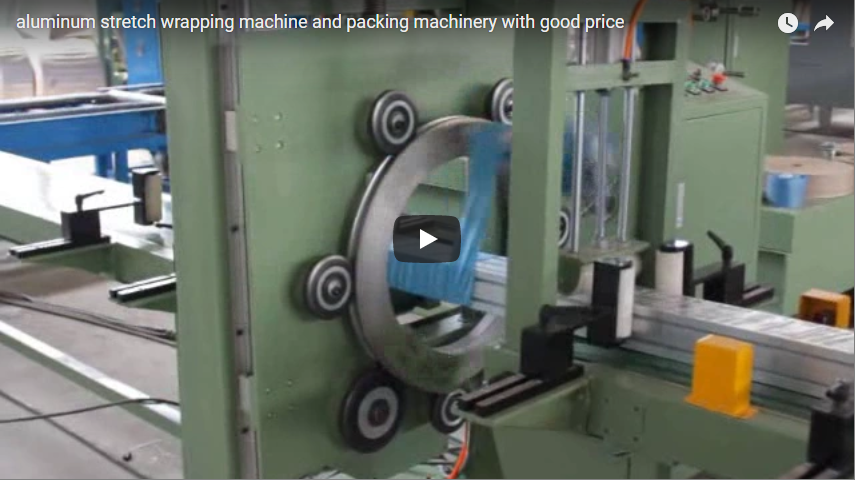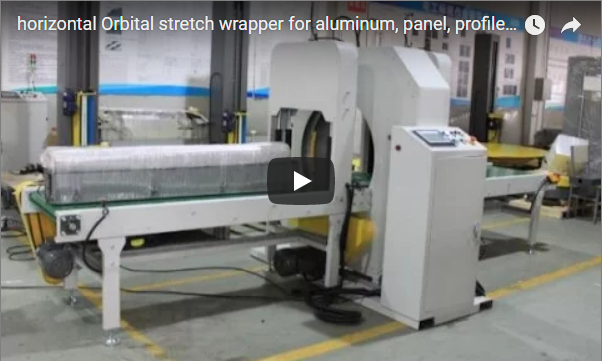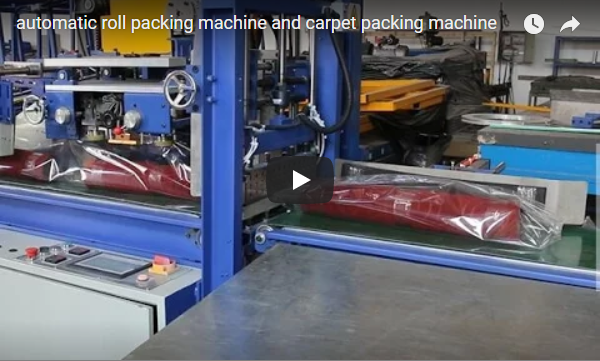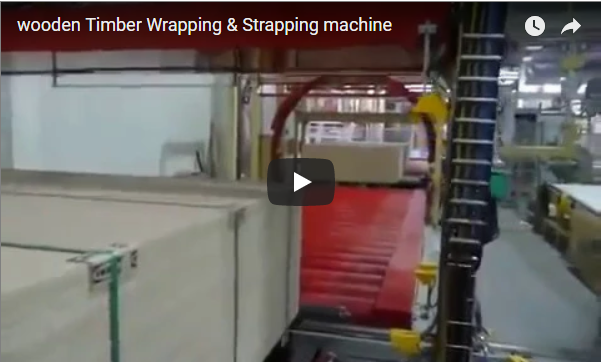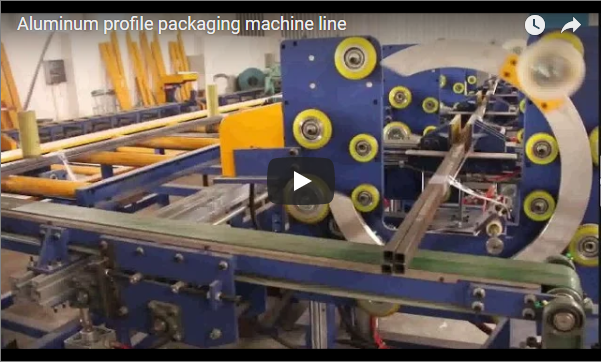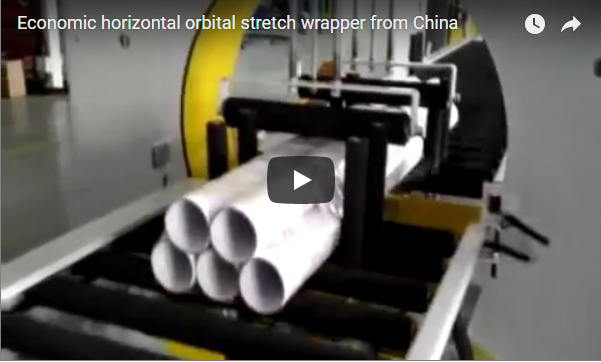1. Introduction: Elevating Packaging with Orbital BOPP Tape Wrapping
In today's fast-paced manufacturing and distribution environments, efficient and reliable end-of-line packaging is crucial. Manual taping and strapping methods often create bottlenecks, introduce safety hazards, and result in inconsistent load security. This article delves into an advanced automated solution: the orbital stretch wrapper utilizing Biaxially Oriented Polypropylene (BOPP) tape. This innovative technology streamlines the bundling and securing process for a variety of products, including boxes, boards, trays, panels, and profiles, offering significant improvements over traditional techniques. Discover how integrating this automated BOPP tape tying system can enhance operational efficiency, product protection, and workplace safety.
2. The Manufacturing Floor Challenge: Limitations of Manual Taping
Manual application of tape or strapping, particularly in high-volume settings like those found in electronics components manufacturing and distribution (as exemplified by challenges faced in hubs like Tokyo), presents significant hurdles:
- Safety Risks: Repetitive motions increase the risk of musculoskeletal disorders, while handling sharp tape dispensers can lead to cuts and injuries.
- Process Inefficiency: Manual taping is inherently slower than automated solutions, hindering throughput and creating delays in the packaging line.
- Inconsistent Application: Achieving uniform tension and placement manually is difficult, leading to poorly secured bundles that may shift or come apart during handling and transit. This compromises product integrity and can increase costs associated with damages and returns.
- Material Waste: Manual application often leads to excessive tape usage, driving up consumable costs and environmental impact.
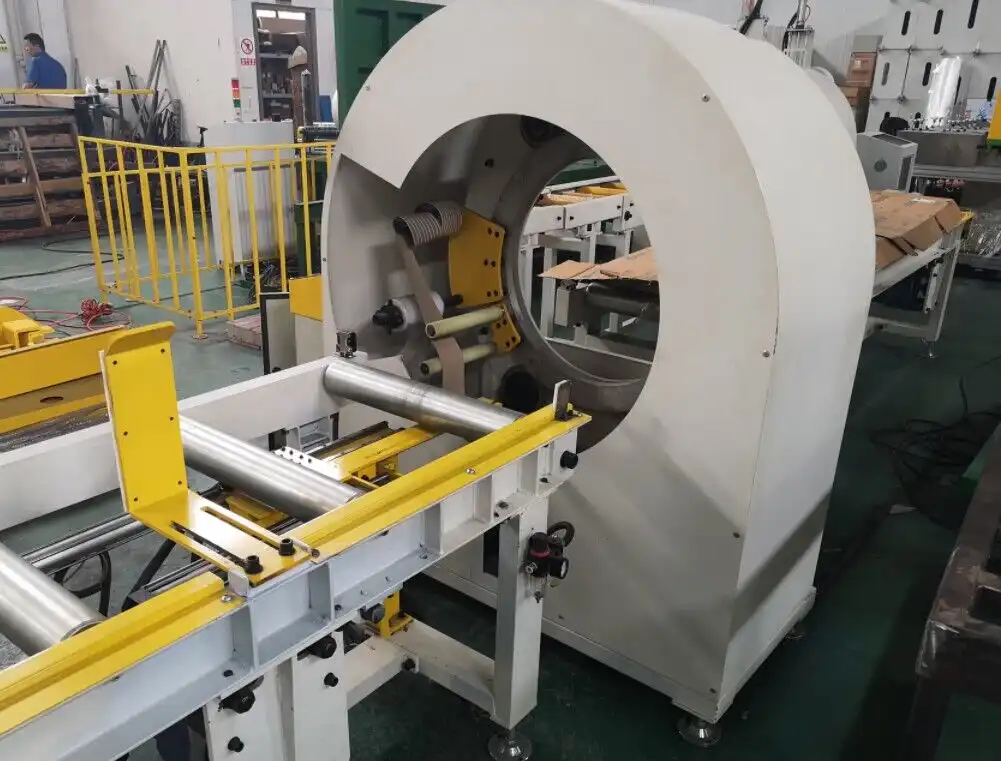
semiauto horizontal stretch wrapper
These factors collectively impact productivity, operational costs, and overall product quality, highlighting the need for a more robust solution.
3. The Orbital BOPP Tape Wrapping Solution: Engineering and Operation
The automated orbital BOPP tape wrapper addresses these challenges through precise engineering and reliable operation.
3.1 Core Operational Principle
The machine employs a rotating ring mechanism that orbits around the stationary product(s) being bundled. A specialized dispenser mounted on the ring applies the BOPP tape under controlled tension, effectively encircling and securing the items together. Once the wrap cycle is complete, an automated system cuts the tape and secures the end.
3.2 Key System Components
Understanding the machine involves recognizing its critical parts:
- Rotating Ring Assembly: The core component that carries the tape dispenser around the product. Its speed dictates the wrapping cycle time.
- BOPP Tape Dispensing Head: Includes the film carriage, tension control mechanism (often mechanical or electromagnetic), and application rollers. Precise tension is key to secure bundling without damaging the product.
- Tape Cutting and Clamping System: Automatically cuts the tape upon cycle completion and clamps the end securely for the next cycle, ensuring smooth continuous operation.
- Product Support/Conveyor System: Infeed and outfeed conveyors (often optional or integrated) transport the product through the wrapping zone. Supports or guides ensure correct product positioning during wrapping.
- PLC Control System & HMI: A Programmable Logic Controller (PLC) governs the machine's functions (ring speed, wrap count, tension, cut timing). A Human-Machine Interface (HMI) allows operators to easily set parameters, monitor status, and troubleshoot.
3.3 Operational Advantages
- Speed & Consistency: Delivers high-speed, repeatable wrapping cycles far exceeding manual capabilities.
- Precision: Ensures tape is applied accurately and consistently every time.
- Adjustable Tension Control: Allows optimisation for different product types – secure enough for stability, gentle enough to prevent damage.
4. Technical Specifications and Customization Capabilities
This orbital taping system offers flexibility to meet diverse packaging requirements.
4.1 Machine & Product Specifications:
- Maximum Product Size Examples:
- Square/Box Profiles: Up to 400mm x 400mm (approx. 15.7" x 15.7")
- Long/Narrow Profiles: Up to 600mm (L) x 150mm (W) x 150mm (H) (approx. 23.6" x 5.9" x 5.9")
- (Note: Specific machine models vary; custom sizes often available)
- Typical Ring Speed: 50 - 150 RPM (Variable based on model and application)
- Power Requirements: Typically 220V/380V, 3-Phase (Varies by region and configuration)
- Compressed Air: Often required for pneumatic functions (e.g., cutting, clamping) - typically 5-6 bar.
4.2 BOPP Tape Compatibility:
- Tape Width: 12mm to 48mm (Commonly used widths depend on bundling strength needed)
- Tape Thickness: 25µm to 60µm (Higher thickness provides greater tensile strength)
- Tape Length: 100m to 1000m rolls (Longer rolls reduce changeover frequency)
- Core Diameter: Standard 76mm (3") cores typically used.
- Material: Biaxially Oriented Polypropylene (BOPP) adhesive tape.
4.3 Customization Options:
- Ring Diameter: Multiple sizes available to suit different product dimensions.
- Conveyor Integration: Powered or non-powered infeed/outfeed conveyors for seamless line integration.
- Safety Guarding: Enhanced safety features like light curtains or physical barriers.
- Control System: Advanced PLC programming for complex sequences or data logging.
5. Quantifiable Performance Benefits and Return on Investment (ROI)
Implementing an orbital BOPP tape wrapper translates technical features into measurable advantages:
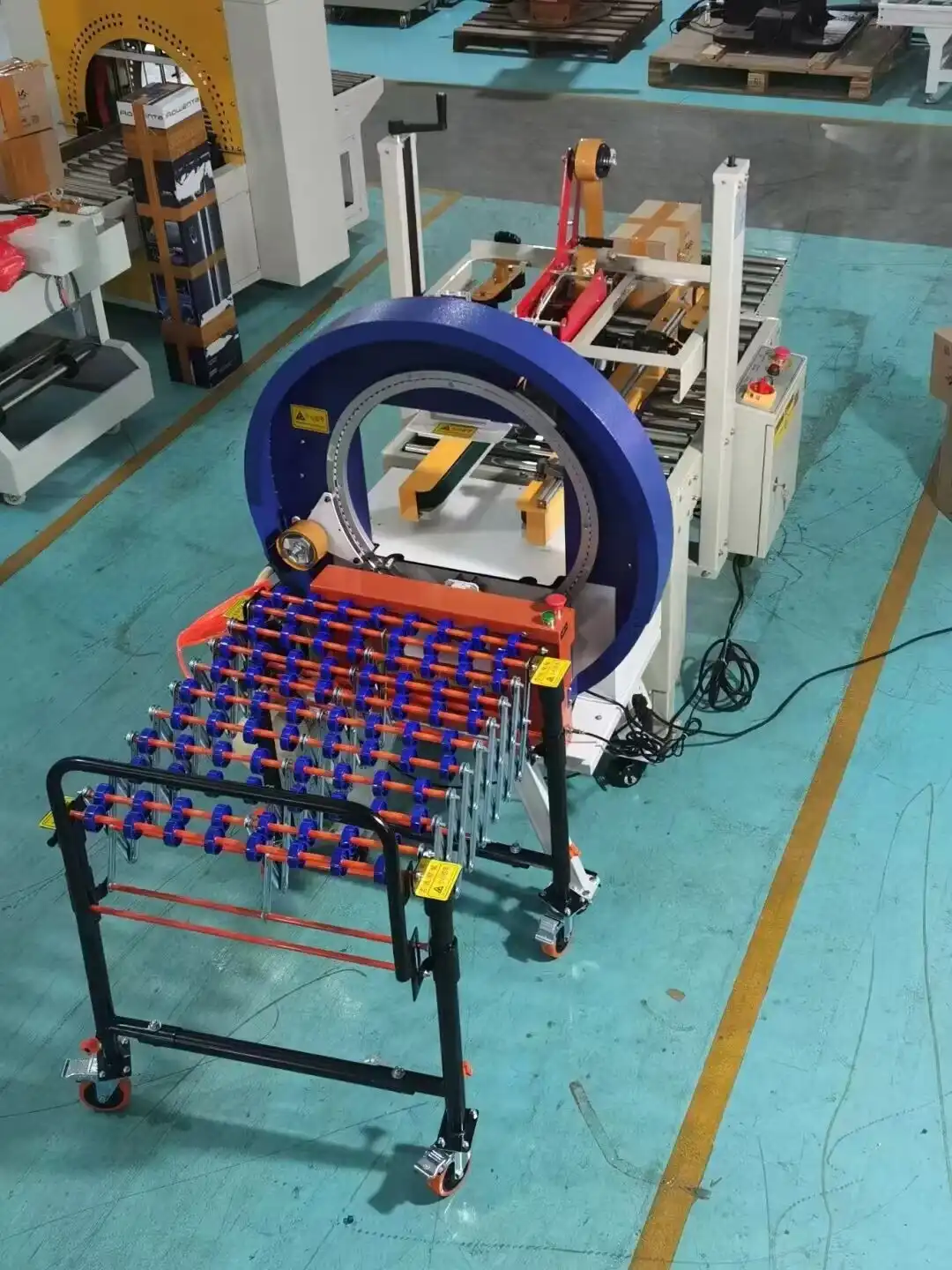
- 5.1 Enhanced Throughput & Efficiency: Automation dramatically increases bundling speed (e.g., capable of processing 10-30 bundles per minute, depending on size and wraps), significantly boosting overall packaging line output.
- 5.2 Superior Load Security & Product Protection: Consistent, controlled tape application ensures bundles are tight and secure, reducing product damage during internal handling and external shipping. BOPP tape provides excellent tensile strength for light to medium-duty bundling.
- 5.3 Significant Material Savings: Optimized tape usage per bundle compared to manual methods reduces consumable costs. Precise application eliminates wasted tape, potentially cutting tape expenses by 15-30%. BOPP tape can also be a cost-effective alternative to plastic or steel strapping for certain applications.
- 5.4 Improved Workplace Safety: Automating the process eliminates manual cutting risks and reduces repetitive strain associated with hand taping, contributing to a safer work environment and potentially lower workers' compensation claims.
- 5.5 Professional Package Appearance: Uniform and neat tape application enhances the final package appearance, projecting a professional image.
6. Real-World Application & User Experience Insights
From a user perspective, operating these machines is typically straightforward after initial setup:
- Setup & Operation: Modern systems feature intuitive HMIs for setting parameters like the number of wraps, overlap, and tension. Roll changes are designed to be quick and easy.
- Maintenance: Routine maintenance usually involves cleaning sensors, checking tape path rollers, and ensuring the cutting blade is sharp. Access panels are typically designed for easy component inspection.
- Operational Impact: Facilities implementing these systems often report immediate relief of packaging bottlenecks. Operators can be reassigned to more value-added tasks, and the consistency of the output improves downstream processes. The reduction in physical strain is often cited as a major benefit by operators.
7. Integration into Automated Production Lines
Orbital BOPP tape wrappers are designed for integration. They can receive products from upstream processes (like case sealers or assembly lines) via conveyors and feed bundled products directly into downstream systems (like palletizers or sorting lines). PLC controls allow for handshaking signals with other equipment for fully automated operation.
8. Selecting the Right Orbital Taping System
Consider these factors when choosing a machine:
- Product Dimensions & Weight: Ensure the machine's capacity matches your largest and smallest products.
- Required Throughput: Match the machine's cycle speed to your production line's requirements.
- Level of Automation: Decide between standalone operation or full inline integration.
- Tape Specifications: Confirm compatibility with your preferred BOPP tape type and size.
- Budget vs. Features: Balance initial investment against long-term ROI from efficiency gains, material savings, and safety improvements.
9. Conclusion: Streamlining End-of-Line Packaging with BOPP Tape Automation
The orbital BOPP tape wrapping machine represents a significant advancement over manual bundling methods. By leveraging automation, it delivers enhanced speed, consistency, safety, and material efficiency. For manufacturers and distributors handling boxes, panels, trays, or similar items, this technology offers a robust solution to optimize end-of-line packaging, reduce operational costs, and improve overall product handling and protection. It is a valuable investment for operations seeking to enhance productivity and maintain a competitive edge.
10. Contact Us Now
Ready to elevate your packaging process and explore the benefits of automated BOPP tape tying? Contact us today for a custom quote based on your specific needs, or schedule a virtual or in-person demo to see this innovative solution in action. Our team can provide detailed product specifications and help tailor a system perfectly suited to your operational requirements.
11. Frequently Asked Questions (FAQs)
1. How does the Orbital BOPP tape solution improve safety compared to manual taping?
By automating the taping and cutting process, it significantly reduces the risk of cuts from dispensers and minimizes repetitive strain injuries associated with manual application, creating a safer environment for operators.
2. Can the system handle different product sizes and shapes?
Yes, these systems are designed with flexibility in mind. While standard models accommodate ranges like 40cm x 40cm x 40cm and 60cm x 15cm x 15cm, different machine sizes and custom configurations are available to handle a wide variety of product dimensions, including long profiles, panels, and irregular shapes within the ring's capacity.
3. What specific BOPP tape specifications are supported?
The machines typically support standard BOPP adhesive tapes with widths ranging from 12mm to 48mm, thicknesses from 25µm to 60µm, and standard 76mm (3") core diameters. Roll lengths can vary from 100m up to 1000m or more.
4. Is this system difficult to operate and maintain?
Modern orbital wrappers feature user-friendly PLC controls and HMI touchscreens for simple parameter adjustments and operation. Routine maintenance is generally straightforward, involving cleaning, inspection, and occasional blade replacement, similar to other automated packaging equipment.
5. How does BOPP tape bundling compare to traditional stretch wrapping or strapping?
BOPP tape bundling is ideal for securing groups of smaller items, lightweight boxes, or profiles where full containment isn't needed. It's often faster and uses less material than stretch film for simple bundling tasks. Compared to strapping, it can provide a wider contact area (reducing indentation) and is often quicker for lighter loads, though heavy-duty strapping offers higher tensile strength for very heavy or rigid loads. The choice depends heavily on the specific application requirements.
Transform your packaging operations today with our advanced orbital BOPP tape tying solution and experience unparalleled efficiency, consistency, and safety.

